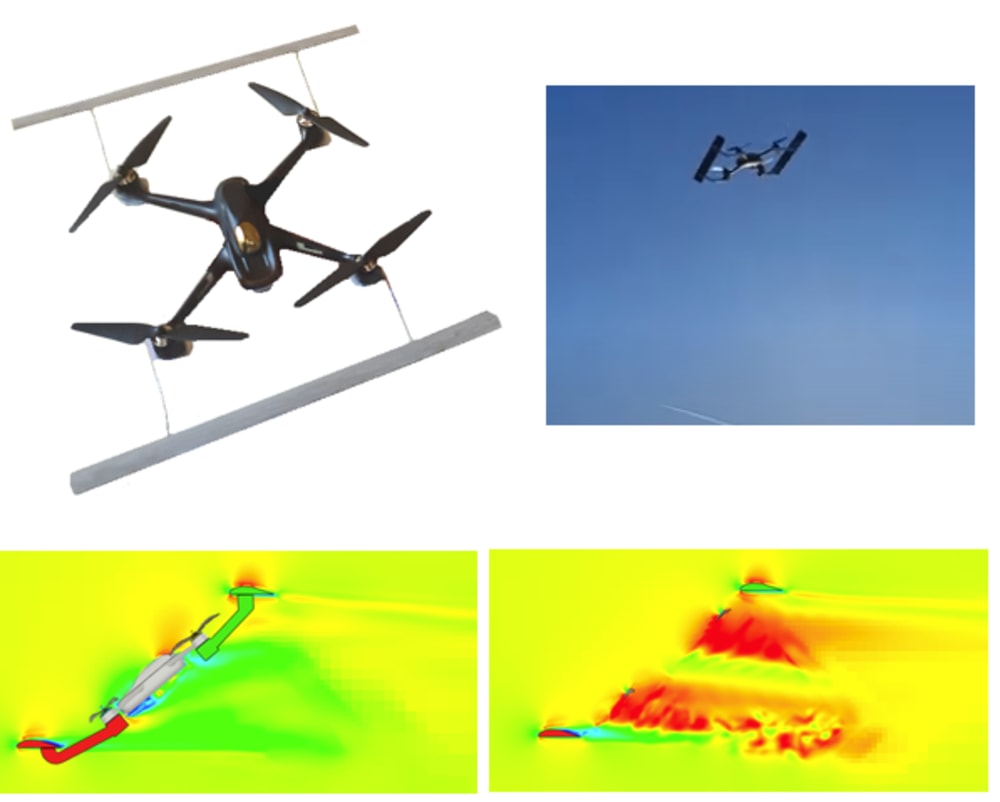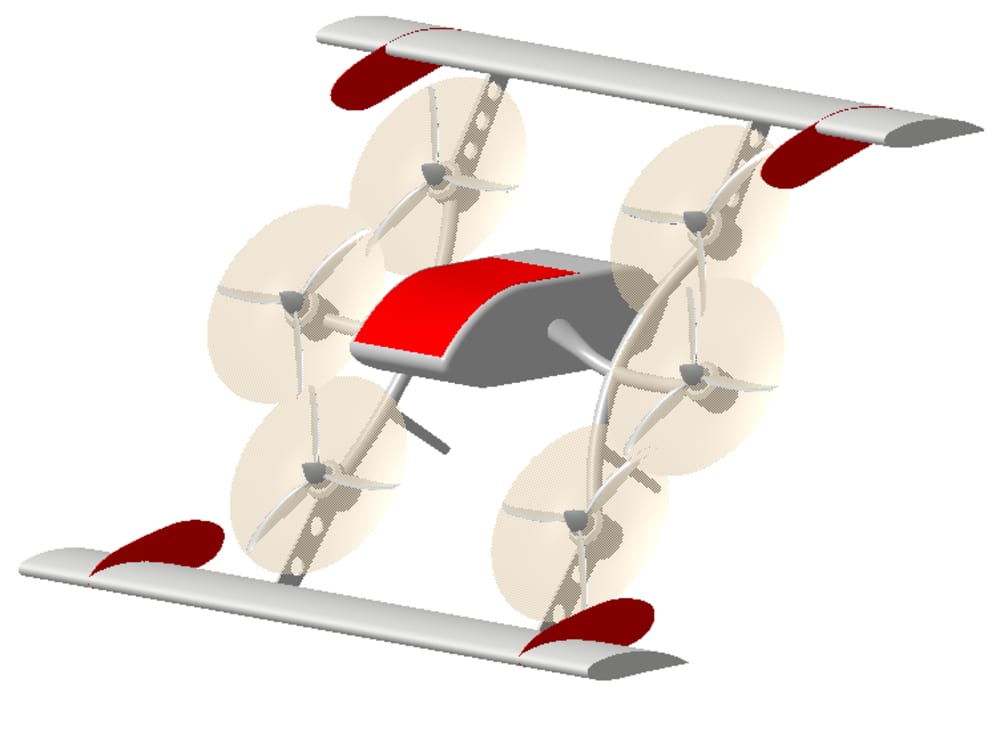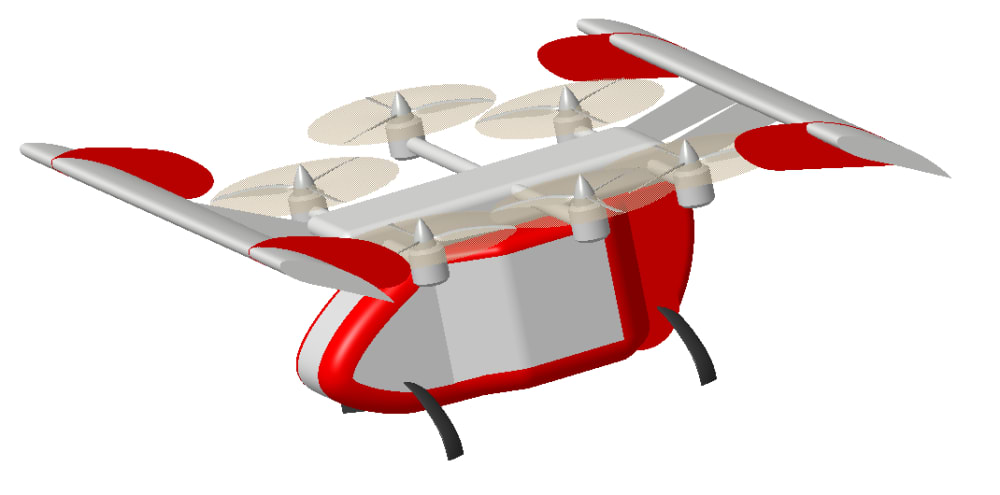
Most of the current Vertical Take-Off and Landing (VTOL) aircraft use tilting propellers or wings acted by servo-motors or actuators which increase the complexity and reduce the failure probability of the propulsion system. The cost of such a vehicle is high and the maintenance operations are complicated.
The concept of Turbo Wing - TW propulsion systems represents a novel integration of aerodynamic and propulsive functions, potentially transforming Vertical Take-Off and Landing – VTOL aircraft efficiency and design. The TW system for VTOL applications utilizes a biplane configuration where propellers are strategically placed between two fixed wings to create thrust augmentation effects. This configuration allows the TW system to maximize the aerodynamic lift and propulsion efficiency in a compact design. The propellers, positioned between the front and rear wings, are crucial in manipulating airflow dynamics.
For a TW drone configuration, in the center of gravity is located a fuselage, containing the avionics and the energy source. TW drone is a tilting body aircraft which achieve the pivoting of the body from the take-off position to the forward flight position.
During operation, the front propellers generate a low-pressure zone above the front wing, while the rear propellers increase pressure beneath the rear wing. This differential pressure setup enhances lift generation, particularly valuable during the critical phases of take-off and landing.
Preliminary validation of this aerodynamic concept was performed using Computational Fluid Dynamics -CFD simulations. These studies are critical in optimizing the design by predicting how the aircraft will perform under various conditions and confirming the theoretical benefits of the TW configuration.
A first prototype TW drone with four rotors was achieved in a base of an existent UAV platform. Using this prototype, a first flight of a TW drone was recently completed.
Other TW drone can use a six propeller configuration. Please see its operation on https://www.youtube.com/watch?v=WQzyrMXPtDI An air taxi configuration is also available for development.
Unlike traditional VTOL designs that separate propulsion and lifting systems, the TW design integrates these functions to reduce overall system complexity and improve aerodynamic performance. The configuration allows for reduced specific thrust requirements, lowering noise levels and energy consumption. Additionally, the strategic placement of propellers enhances lift without necessarily increasing the wing area, leading to a compact yet highly efficient design.
The TW utilizes Distributed Electric Propulsion (DEP), which involves multiple electrically powered propellers distributed across the aircraft’s structure. This setup not only enhances lift capabilities but also permits new flight control methodologies, such as vectored and differential thrust, which can simplify or replace traditional control surfaces. The TW design incorporates multiple propellers to increase redundancy, enhancing operational safety. The compact design and protective placement of propellers help prevent environmental contact and ensure safer interactions with ground personnel.
By eliminating traditional actuators or servos for propeller or flap adjustments, the TW system benefits from a simplified mechanical design, reducing both initial construction and ongoing maintenance costs. This simplicity also contributes to a more robust and reliable system, essential for operational durability.
Video
-
Awards
-
 2024 Top 100 Entries
2024 Top 100 Entries
Like this entry?
-
About the Entrant
- Name:Liviu Grigorian Giurca
- Type of entry:individual
- Patent status:patented








